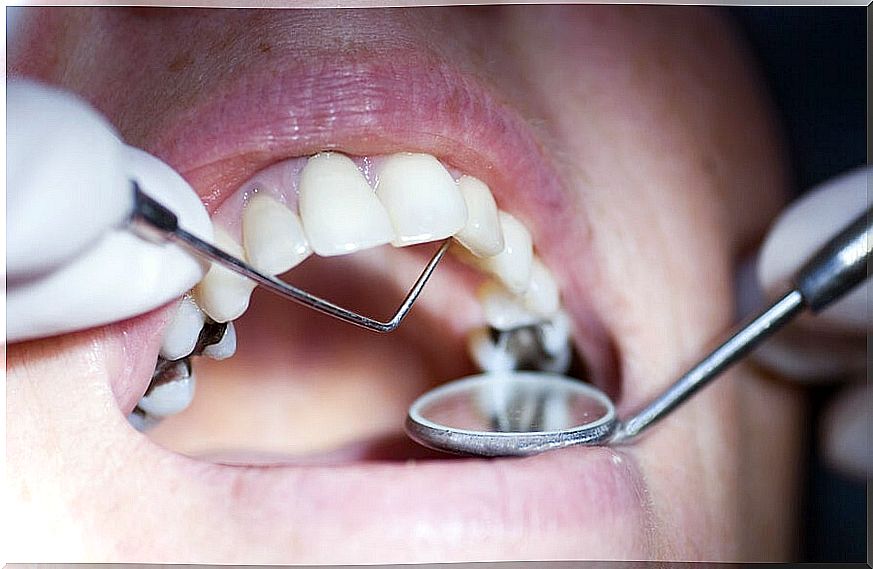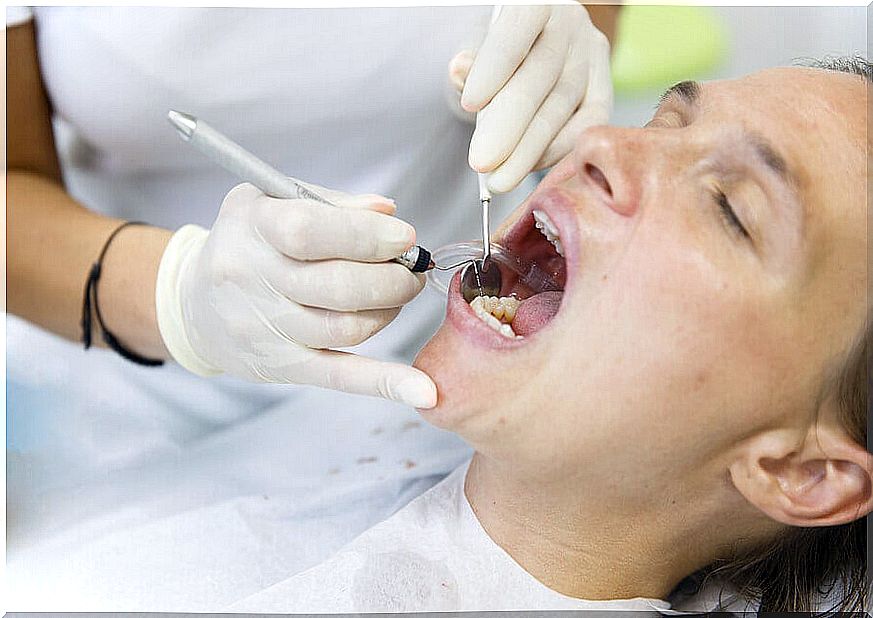Health Risks Of Amalgam Fillings
Mercury amalgams are very common in dental procedures. However, their use is controversial, as it is suggested that they may pose a health risk.

Mercury amalgams are used to help the tooth return to its initial state after being damaged by cavities. They also help prevent them from recurring.
The problem is that many of these dental fillings are made primarily of mercury, a long-lasting heavy metal, which could be toxic to your health. In fact, in some countries, this type of amalgam is prohibited due to the risk they pose.
In this article we explain everything you need to know about these amalgams: what they are, how they can affect your health and if there is a possibility of replacing them.
What is a dental amalgam?
Amalgam is a silver-colored material that dentists use to fill cavities that appear due to cavities. It combines several metals, such as liquid mercury (50%), silver (35%), copper (2%), tin (13%), and sometimes zinc.
According to a publication of the US Food and Drug Administration (FDA) , the mercury in amalgams is released in the form of vapor and this is absorbed by the lungs. High levels of exposure to this vapor can cause the person who ingests it to suffer adverse effects on the brain and kidneys.

Exposure to mercury from amalgams
A dental amalgam contains between 750-1000 mg of mercury and has a useful life of 7-9 years, as suggested by a publication in the Revista de Saúde Pública . This metal is released over time as a consequence of:
- Saliva.
- Gastric acidity
- Chewing of food.
- High temperatures.
The mercury vapors that are generated, since they are absorbed by the body every day throughout life, are a great source of ongoing toxicity.
In addition, there is an ecological trend to increasingly reduce any product made with this metal, since it has a negative environmental impact for the planet.
To counteract this problem, in 2017 the Minamata agreement entered into force, which, according to information from the United Nations, seeks to protect people from toxic emissions of this metal by prohibiting its use in mining, cosmetics and consumer products. everyday like light bulbs and batteries.
Health risks
The aforementioned document suggests that exposure to mercury can have an impact on the health of people of any age, particularly children and babies, by affecting the heart, kidneys and lungs.
One of the greatest risks of mercury is that, although some is eliminated naturally, a significant proportion of this heavy metal accumulates in the body and remains there for years.
Another serious problem, according to a publication from The Mayo Clinic, is that its compounds are able to cross the placental barrier and reach the central nervous system of the fetus during pregnancy.

Is it possible to remove mercury amalgams?
When people who wear mercury amalgams know the risks they might be exposed to, they often ask the same question: Can they be removed to avoid health problems?
The good news is that yes, amalgam can be removed and replaced by other options, but it is necessary to know the risks that this implies.
According to the FDA publication that we already mentioned, if the fillings are in good condition it is best not to remove them. The reason is that there could be unnecessary loss of healthy tooth structure, and furthermore, if the process is not done properly, additional mercury vapor will be released.
Either way, it is necessary to consult with your dentist to learn about the different options and possible complications of the process.









